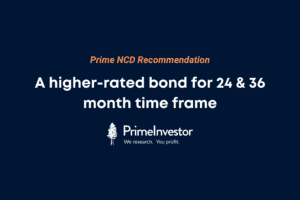
Over the course of the last 2 weeks, following the Franklin debt funds’ fallout, many of you (our subscribers) have written to us seeking answers to a number of questions on the debt funds you hold.
Many more of you have diligently gone through our Prime Ratings, our buy/hold/sell calls in our MF Review Tool and our list of recommended funds – Prime Funds. Needless to say, a majority of the questions revolved around the credit risk in your funds or the funds we recommend, given the season now!
I am listing down samples of such questions as excerpts:
- Some liquid funds like Franklin Liquid have papers below AA+. Why is that featuring high in your ratings? Is this a cause for concern in liquid funds?
- You have a poor opinion on HDFC Banking & PSU Debt, which is from a high-quality category while your opinion is higher for a fund like SBI Magnum Medium Duration with higher risks.
- A top-rated fund like HDFC Short Term Debt has a D paper and more credit risk than a fund will nil risk like Axis Short Term debt which is below the HDFC Short Term Debt in your ratings.
- You have a ‘buy’ call on a short-term debt fund with only 83% above AAA while you have a 2-rating on L&T Gilt fund that has 100% in gilt.
- If gilt funds are the safest, why should I consider other funds at all?
You may be having similar questions. This article will address these queries and more with examples. Through this, we want to help you understand what you may be missing out on and where you could be going wrong when you look at metrics in isolation or place one metric above all others.
Prime Ratings or MF Review Tool or Prime Funds is not an assessment of credit risk alone. None of these amount to credit rating. They are well-rounded assessments of funds, considering a fund’s risk (credit, concentration, asset and liquidity) to the extent we can decipher, its strategy, cost, and very importantly sustained performance.
The common thread
The commonality in the questions we got were that ALL of you were looking at credit risk alone. Understandable, given recent events. However, when assessing a fund, risks and return potential go hand-in hand. And that is what we try to do when we assess funds and rate funds.
Prime Ratings or MF Review Tool or Prime Funds is not an assessment of credit risk alone. None of these amount to credit rating. They are well-rounded assessments of funds, considering a fund’s risk (credit, concentration, asset and liquidity) to the extent we can decipher, its strategy, cost, and very importantly sustained performance.
Hence, when you look at our MF review tool or recommendations, this is the primary point you need to keep in mind.
Now we’ll move on to individual illustrations to explain the thought process that goes into deciding whether a fund is a worthy one or not, besides just the credit rating.
What lies beneath also matters – Franklin Liquid fund example
Let’s take the first query on Franklin India Liquid fund. To be wary of even a small proportion of credit risk in liquid funds is a prudent approach. However, sometimes the rating themselves may not fully reflect the strength of the underlying papers.
Liquid funds cannot invest in any paper that has a maturity more than 91 days. Most of their portfolios are therefore tucked in money market instruments. But they can allocate small parts of their portfolio to bonds (sometimes with ratings of even AA or AA-) which will mature in a few weeks or a couple of months if they are attractive. We take cognizance of such papers and check for the strength of underlying companies before dubbing those as bad practices. Not every single paper that is AA or AA- is bad or risky.
Franklin Liquid had AA/AA- papers, but these papers were of Tata Motors, Bharti Airtel, and Vedanta. When we look at the probability of default risk in these, we take the following into account: first, the residual maturity of the paper (maturing right away or later), whether there has been any recent downgrade in such paper, and the groups’ strength, even with the lower rating.
The Tata Motors paper accounted for 1.2% of the portfolio as per latest available data and the other 2 papers were paid off. Yes, Tata Motors may land into trouble in an impending slowdown in automobile but the question is whether it is going to default on a small borrowing falling due this month and whether the Tata group lacks resources to allow such default. A default can have repercussions for the credit rating in other group companies too.
There are similar examples across fund houses. Hence, a fund cannot be written off for carrying a small exposure to very near-term papers that hold some risk.
Bottom line: Credit risk assessment is crucial in liquid funds. But there is no cause for panic if a small proportion is in an AA-rated paper for a very short period, and that too with limited exposure.
Risk assessment differs – HDFC Banking & PSU example
HDFC Banking & PSU Debt fund held on an average 25% of its holdings below AA+. Yes, close to 14% were not bad as they were in perpetual bonds and other bonds of PSU banks. However, you do not expect this category to take such exposure, when there are better options.
Hence, we penalize this exposure in this category far higher than we would look at the medium duration category which houses SBI Magnum Medium Duration. With over 30% exposure to papers below AA+ rating, the fund is penalized sufficiently considering its category’s average exposure and also the time frame for this category (which is higher than banking & PSU debt).
Bottom line: Risks and assessment of risks will vary based on time frame and objective of category. A shorter time frame or low-risk strategy provider lesser leeway for risks. You may want to read our earlier important article where we use different cut offs to look at risks in different categories.
Performance and cost matter – Axis Short Term example
Axis Short Term Debt is a high-quality conservative fund with almost nil exposure to papers below AA+. But it is rating lower than HDFC Short Term Debt, which has ‘D’ exposure. But is that all that it takes to assess a fund either through our rating or MF tool review? No. Here are a few of the other things that matter:
- HDFC Short Term Debt has a superior risk-adjusted return when 1-year returns are rolled daily over several years showing return consistency across interest cycles.
- It has lower instances of 1-month negative returns showing it manages adverse rate cycles better.
- It has a higher AUM providing comfort on any sharp redemptions
- And very importantly it has a far lower expense ratio, especially under the regular plan.
- Other data on its performance over a min. time frame of 2 years that we suggest is given below:
These are some of the qualities (not all) that we look at other than portfolio credit quality and weight them appropriately to base a buy or hold or sell decision.
Yes, the HDFC Short Term Debt fund had a paper from IL&FS (Hazaribagh Ranchi) that was written off to D and accounts for 0.2% of the portfolio. It also has close to 7% overall in lower rated papers. So why is it still all right?
First, this is not a high exposure for this category. Second, in our ratings and review it is appropriately penalized for such exposure and yet makes it on account of all the metrics we mentioned earlier.
The fund is also not a case where performance is masking the risk, if you look at the nature of papers below AA+ (go to our first point on what lies beneath).
It does not also mean the Axis fund is a bad one. It simply means that the other one scores on many counts overall.
Bottomline: While credit risk is something you need to be watch for, you should not lose track of performance and ability to handle the same across market cycles. This picture is also needed, especially in good times, when your expectation naturally goes up.
Cannot lose sight of other risks – the gilt fund examples
We’ll combine the last two questions I mentioned above, given that it deals with the same point – zero risk in gilt funds. The first one compares a short-term debt fund with 83% exposure to paper above AAA versus a gilt fund with a 100% gilt exposure.
First, when fund comparisons are made, you need to make them within their mandated category and strategy. A short-term debt fund is not required to hold 100% in gilt and it cannot have a long maturity.
A gilt fund is required to hold 100% in gilt and can hold any duration but is mostly long. Hence, short-duration and gilt funds necessarily behave and return differently from each other. Hence, opinion cannot cut across categories.
Now, if we compare L&T Gilt within its category, it not only has a high expense ratio but importantly beats its peers less than 15% of the times when 1-year returns are rolled daily over longer periods. Its risk-adjusted return (adjusted for volatility) is also lower than peers.
And why is volatility important in gilt? Because gilt prices fluctuate the most and gains can quickly be lost. Hence our job is to highlight the better performers in the space. Otherwise, all gilt funds would be ‘buys’ if we went by credit quality alone!😊 While you may heave a sigh of relief that they have no credit risk, can you take 5-7% fall in these funds over 3-6 months and negative returns even for a year sometimes?
That is the characteristic of a gilt fund. In our own experience, most investors don’t expect negative returns out of their debt holdings. So, while you may be a patient investor, you will have to take such volatility as par for the course.
And of course, such volatility means that they cannot be short-term products. And unfortunately, no gilt fund clearly labels itself as being short term, post SEBI’s new category.
On the increasing opinion that gilt funds are the best and one doesn’t need other funds, it is true only if:
- Your time frame is long enough – 5 years or more
- You can stomach high volatility (read negative returns) in these funds in the short to medium term.
Summary
The idea of giving these queries as examples is to ensure that while your concern for credit at this juncture is valid, in the process, you should not be ignoring a number of other aspects that are vital to choosing or reviewing debt funds.
Key among these will be:
- Performance: It is important not to lose sight of performance. Without it, the purpose of coming into debt funds instead of FDs will be defeated.
- Low credit rating alone is not a sign to sell: A small proportion in a marginally low-rated paper from a reputed corporate group need not immediately mean the fund is a sell. It needs a little more digging to understand and you can trust us to do it to the best of our ability.
- Cost: In debt funds, where return differentials are wafer thin, cost can be a huge differentiator. A simple, conservative fund with high cost loses out on returns.
- AUM – In many fund categories, asset size is a key criterion and you cannot lose sight of it at any point in your anxiety to hold to quality credit.
- Fund behavior across cycles: A fund’s ability to beat an adverse interest rate scenario and stay less volatile across rate cycles is a key characteristic. A 100% credit-safe fund may still give you sleepless nights because of its volatility.
Look at credit quality but do not look at them in isolation. When you use our Review Tool or our Prime Funds, we take all of them, weight them appropriately and then analyze them.






21 thoughts on “Evaluating debt funds – It’s not just about credit risk”
Is it not possible to give top 1 to 5 funds of each category updated every month or quarter based on your evaluation philosophy so that investors get clear idea. about investment
That is what we do with our recommended list of funds called – Prime Funds, updated on a quarterly basis. https://www.primeinvestor.in/best-mutual-funds. You can access it as a subscriber.
As a subscriber, you can also use our review tool to check the funds you hold are a buy/sell or hold. https://www.primeinvestor.in/mf-review-tool
However, note there is no such thing as top 1 to 5. Different funds qualify for different reasons and the reason for each fund in our ‘Why this fund’ section explains it clearly.
thanks
Vidya Bala
Which is the D paper in HDFC Short Term Debt Fund? Would like to know about the same. Thanks.
It is explained in the article in the section that discusses this query. thanks, Vidya
Got it. Thanks.
Well presented and good deep dive. You should also highlight how some of the short term debt funds use gilts to juice up returns. While this reflects well in credit quality, the volatility increases compared to some of the ST Debt funds which have a steadier accrual strategy.
On a separate note, is there anywhere on the site that I can get rolling return analysis of MF schemes (debt and equity). Would be interesting to observe . Thanks
Hello Sir, Thanks! The short-term funds that use gilts mostly use those with low residual maturity. That doesn’t add to volatility. Data – we have ‘key ratios’ (when you clikc a fund) that are an outcome of some of thr rolling returns and not rolling returns per se.We may also not seek to provide it as we are not a data provider per se. We seek to provide researched solutions. thanks, Vidya
Example: The IPru short term has a 10% allocation to 2033 and 2029 together. While the overall duration is still 2.65 years, due to the exposure to the 2 LT securities it can b a bit more volatile. And am not even counting 4% allocation to 2026/ 27/28 that’s classified as “short term”.
Sir, if the same were in a ultra short, yes. But with Short term, as they are not going to invest a chunk in treasury, they need liquidity. And the easiest way is to ensure through gilts. And we think that is a good strategy because short term as a category needs some liquidity for redemptions and even though laden with AAA, impact is lower in selling gilts quickly than AAA. So as long as they manage this within the required duration, we think it is ok. If there is volatility, it will show up in our metrics and push them down in our evaluation anyway. thanks, Vidya
Thanks, well articulated !
Hi Vidya,
What about Kotak Bond Short Term. This is having 24% in SOV and and rest in AAA. Returns are also good. But MF review tool suggest to Avoid this fund. Please provide update.
Thanks
Hello Sir, This article is to illustrate why there are many other aspects other than credit to be considered and explain that our review takes all those factors. The eg of HDFC ST vs Axis ST was to illustrate this point. You will also appreciate it is hard for us to give the reasons for 1000 funds separately. That is why we are explaining the underlying philiosphy. However, if you are a subscriber and wish to have this alrified, please write to us for specific queries. thanks, Vidya
I find it very strange that you are not comparing apple to apple.As rightly said, Kotak has 100% investments in SOV,AAA and A1+ with a good track record on rolling returns last 2 years yet it is not recommended on your site at all.The reason that you have stated is not convincing.
The single most important criteria for the most us is to stay alive and if we are alive then preserve our capital first.Most of us choose Debt funds because our goals are near and we do not want to take undue risks.I think I can easily forgo that extra income for the amount of risk I need to take for another 6 months/until pandemic is under control.I don’t mind lower returns if the fund is holding all SOV/AAA’s given this virus situation/lockdown.
Also, all debt funds have huge outflows (domestic and foreign investors).Its natural that % of below AAA/A1 papers will increase because of the outflow , as the AMCs will find it difficult to sell lower rated bonds at good price point.
AMCs and those who are dependent mainly on MF business are busy in promoting all types of funds.They have forgotten the fact that retail investors have other safe options such as tbills. In all likelihood there will be more rating downgrades than rating upgrades in next 6 months, that will affect the debt fund returns.
Bond movement is a good indicator of the prevailing sentiments.Bond yields have continuously decreasing.It means the most are retreating to the safe heavens such as SOV/Tbills.Also, most MFs are stocking up SOVs as against NCDs/CP/CDs
There are few below AAA/A1 rated papers that HDFC is carrying are due for maturity in coming months.As we stand today we don’t see the light end of the tunnel to the corona virus pandemic.Why would anyone want to risk on their capital?
Thanks for the article.
Hello Sir, I have not even stated any ‘reson’ about Kotak Short Term to the other query, except to say if you are a subscriber please write to us to explain. 🙂 I have stated that the illustrations I gave are to explain the thought process.
We know and have a reasoning for every fund we have a buy/hold/sell on our tool. As we cannot be explaining every fund in a blog as RA registered analysts, I have only stated, as a subscriber, the person is free to question the opinion we have given in our MF review tool through the contact us link in the website, from your registered email id (subscriber id) and we will answer.
HDFC – again if you have a specific question, please write through your subscriber id and we can easily explain.
thanks, Vidya
“As rightly said” was for Deepak’s comment above yours…:)
Wrt to those short term funds let the time decide.
If possible do publish your views on “Gilt funds/MFs as short term tactical investments in a potentially falling interest scenario/economy”
Thx for your quick response and a thought provoking article.
Sure sir. Please do subscribe to benefit those 🙂 Vidya
If gilt funds have volitility, isn’t PPF, VPF are better options for long term goal. Why one need to have gilt funds for long term then?
Hello sir, one, you will not have lock-in in gilt funds. Two, they can provide price gains that PPF or VPF will not. You only get coupon (interest). So even as PPF or VPF rates go down, gilt will provide capital appreciation opportunities. thanks, Vidya
Nice one. Thanks for the insights. To reiterate there is no change in your ratings for even some of the Franklin Debt funds ( i.e outside the six like Franklin Savings or liquid funds)
Fantastic analysis. Really lucid in bringing out rating of debt funds which in fact is the most difficult category to master!! Thanks
Thank you sir! Vidya
Comments are closed.